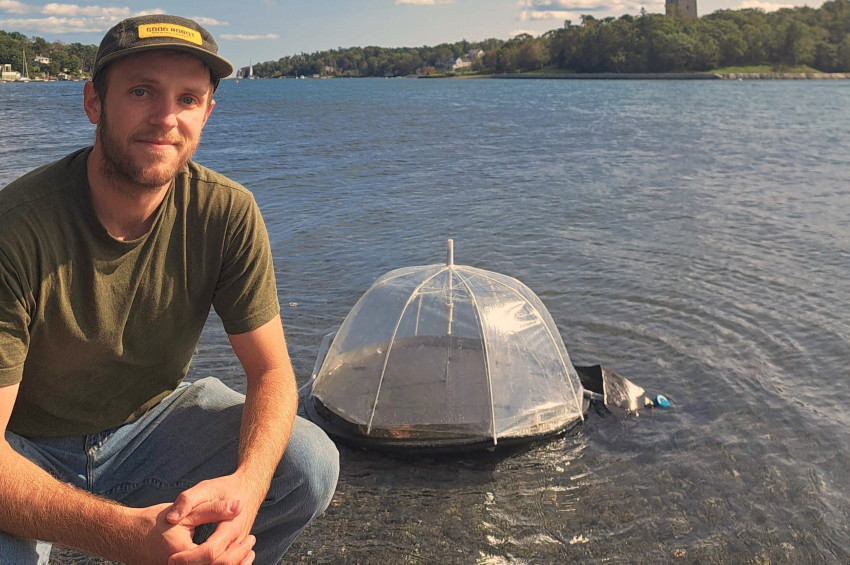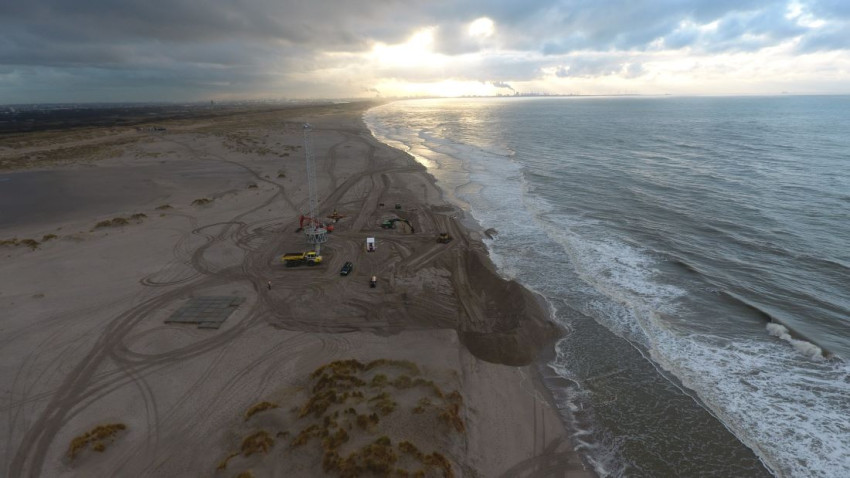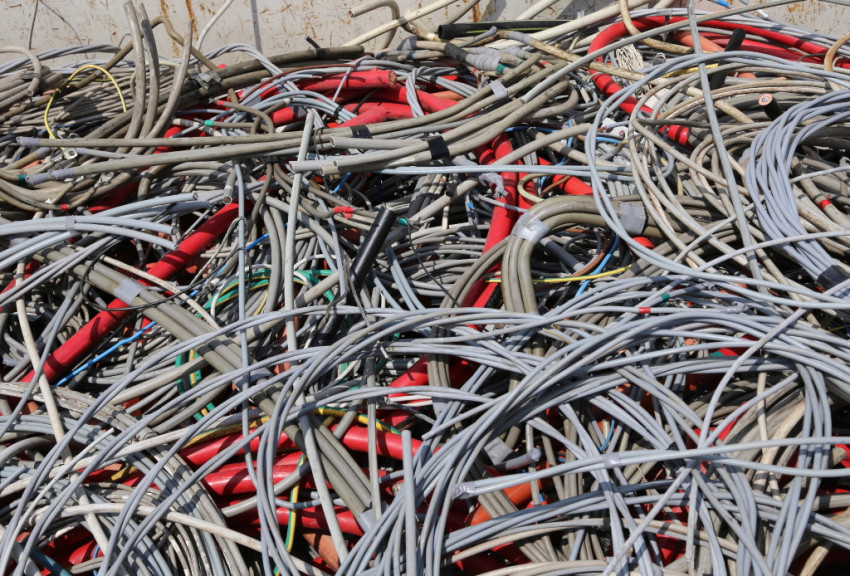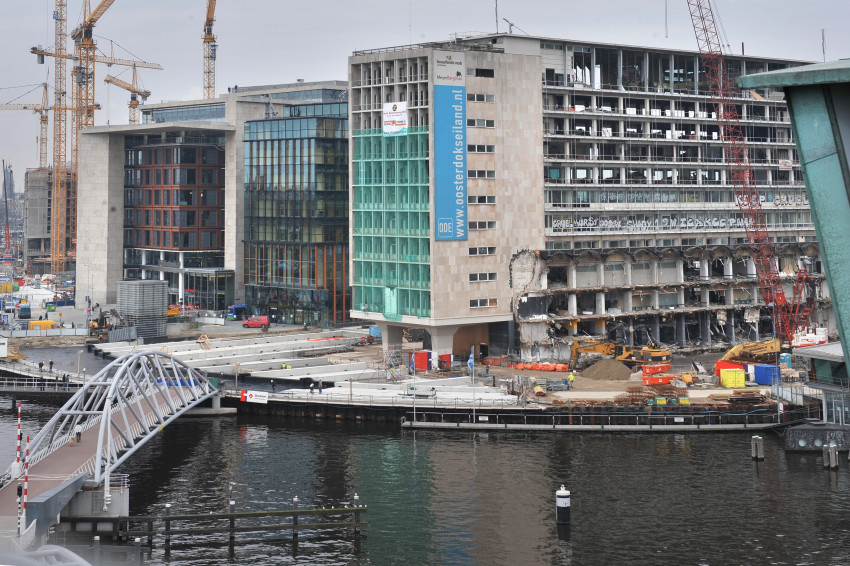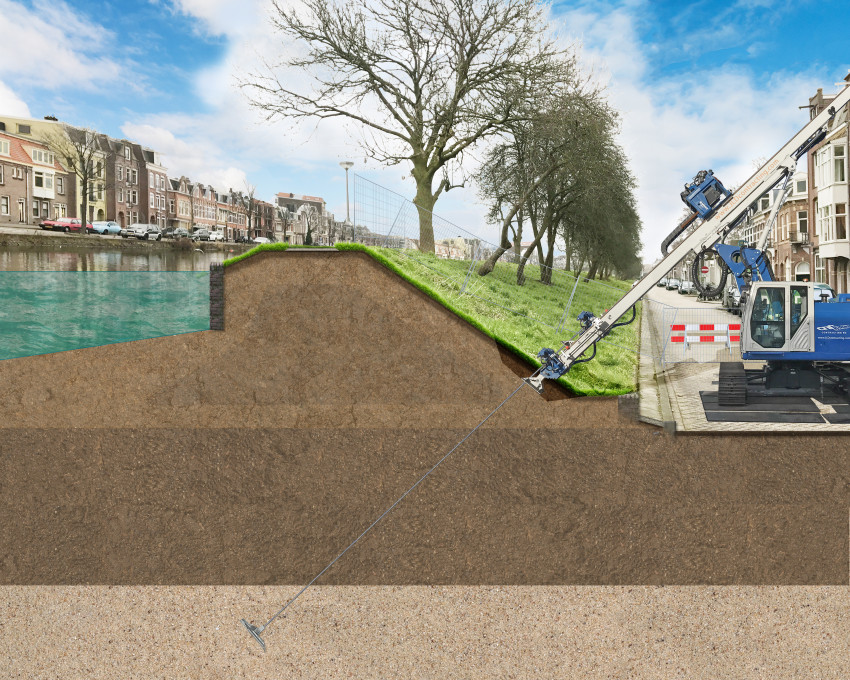
World premiere for Amsterdam dike
In the Watergraafsmeer district of Amsterdam, the dikes are being reinforced using tie rods with anchors. This is an innovative, sustainable solution that causes very little nuisance and – specifically – is safe. A world premiere, says the water authority.
Over a distance of one kilometre, a basalt-fibre tie rod is drilled into the inner slope of the ring dike every 1.5 metres. At the end of the rod is a collapsible anchor. The moment the anchor reaches the required depth, the tie rod is put under mechanical tension and the anchor expands – just like a ship's anchor, but in this case eighteen metres underground.
This anchors the dike to the substrate. The tie rod is secured to a top plate just below the dike face. If the dike swells or shrinks – which is dependent on water levels – the forces are not transferred to the vulnerable inner slope, but are absorbed via the rod and the anchor by the much stronger dike core.
This week began with the initial drill holes, and the first anchors are now in place. Rijkswaterstaat no longer refers to it as a trial project as this system has already been tested too extensively for that, but we'll have to wait till early next year before the evaluation determines whether or not the dike stabiliser can be used elsewhere.
Ten year old principle
The dike stabiliser is the brainchild of designer and entrepreneur Jos Karsten from family firm JLD Contracting in Edam. Ten years ago, he came up with the principle for peat dikes and clay dikes. ‘I was very confident that it would work. But there is a big difference between self-confidence and gaining the confidence of other people.’
In tests on a trial dike in Purmerend, the dike reinforced using Karsten’s stabiliser remained intact for much longer under pressure than traditionally reinforced dikes. The dike even managed to retain its shape when it did finally give way.
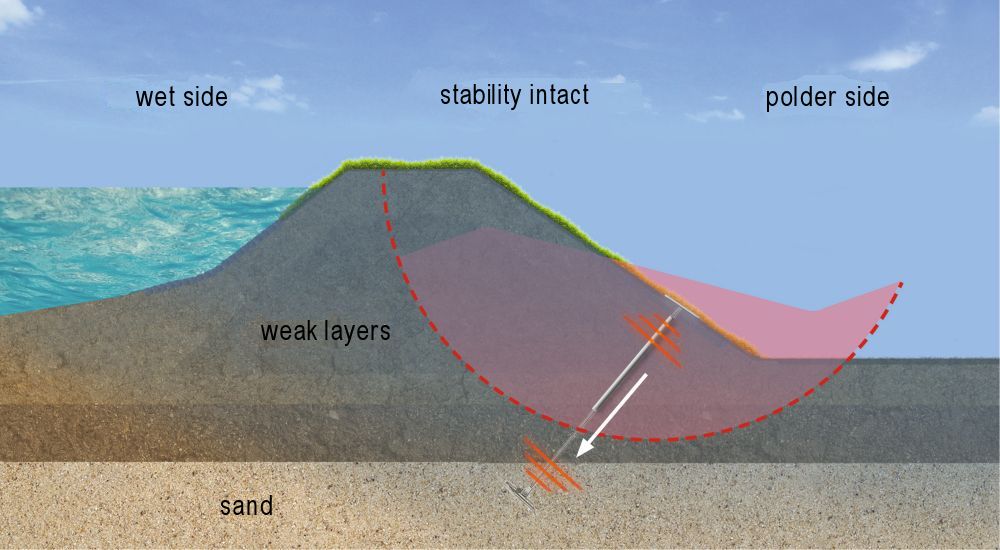
Sensors in the dike
The benefits of the stabiliser are extensive, says Karsten. The system is relatively economical, fitting is simple and is nuisance-free for local residents. What's more, it doesn't change the appearance of the dike: not a single tree needs to be cut down. Thanks to the use of plastics, the system also has a design life of one hundred years, suggests Karsten. One further advantage is that the top plate is fitted with sensors. These continually transmit which forces are acting on the embankment and communicate warnings when measures are needed.
Over the next ten years, Rijkswaterstaat will be reinforcing dikes throughout the Netherlands together with the water authorities. Hundreds of kilometres of dikes and 256 sluices and pumping stations are being prepared for the impact of climate change. A sum of 7.4 billion euros has been earmarked for this.
If you found this article interesting, subscribe for free to our weekly newsletter!


